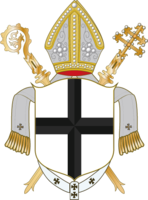Categories Online-Shop Germany German States until 1871 Cologne
Cologne

Cologne was officially founded in 50 AD under the name Colonia Agrippinensis, although a settlement existed here for at least 80 years. In 313, a bishopric was set up in the city, the first bishop being Maternus. Charlemagne elevated the diocese to the rank of archdiocese in 765. After the dismemberment of the duchy of Saxony in 1180 archbishop Philip I von Heinsberg received the duchy of Westphalia from emperor Frederick I Barbarossa, which further increased Cologne's power and influence. In 1201 Cologne joined the Hanseatic League and was thus able to further expand its economic potential. In accordance with the growing importance, the archbishops became the elector-princes of the Roman-German king in 1356 through the Golden Bull and gained even more influence over the politics of the realm. In 1801, Cologne was secularized and the area divided over several neighboring rulers.
From the middle of the 10th century existed an imperial mint in Cologne. The archbishops and emperors coined here jointly. From the 11th century, the ecclesiastical princes also issued independent coinages. They produced mainly denarii, on which the clergymen immortalized themselves. In 1386 the “Rheinische Münzverein” was founded by Cologne, Mainz, Trier and the Palatinate. Thus began the time of the white pennies (also called Albus) and gold gulden in Cologne, which were struck well into the 16th century. Next came the heller and later also the thaler.


